
The entrance facade with Adam's portico

Adam's portico
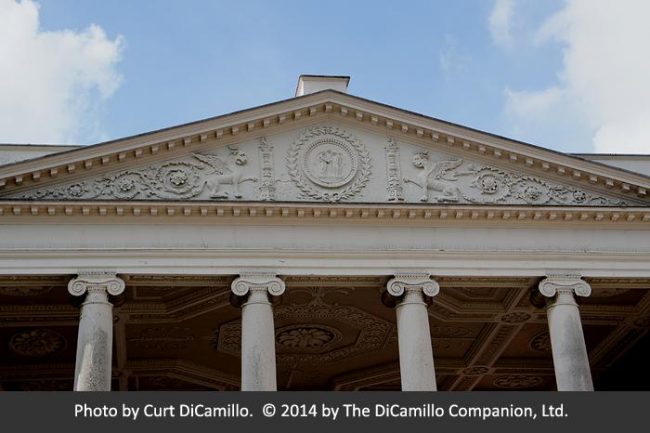
Adam's portico pediment

The rear facade
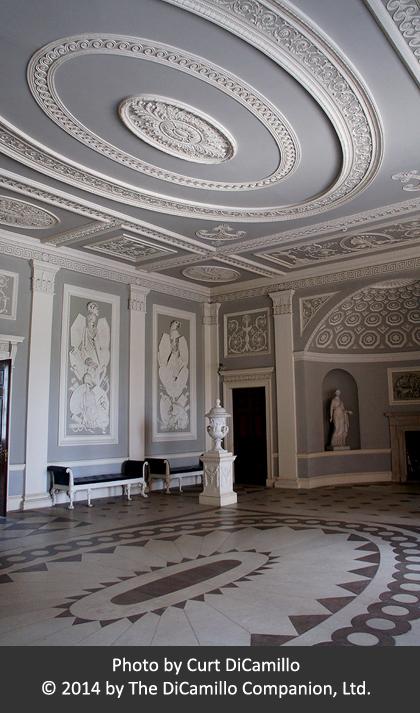
Adam's entrance hall
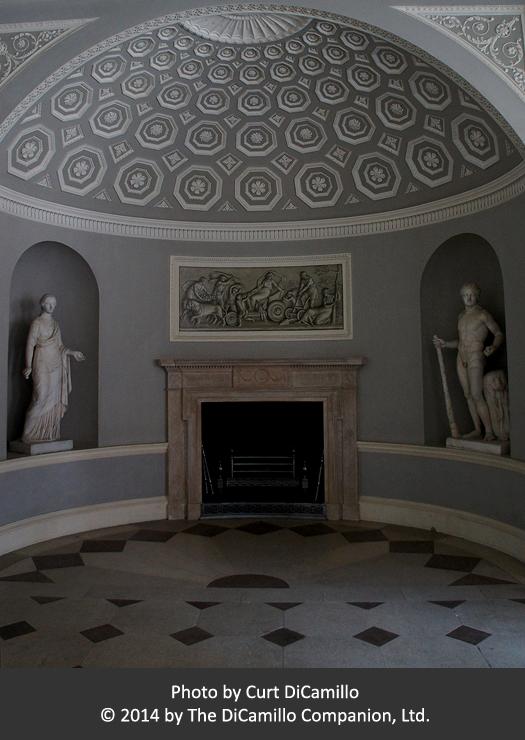
Adam's entrance hall

Adam's entrance hall
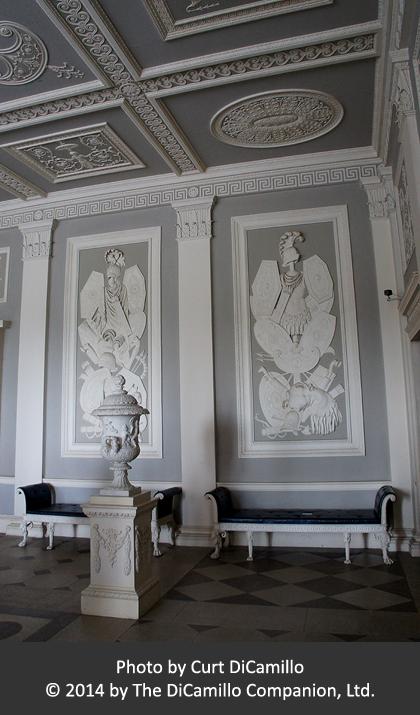
Adam's entrance hall

Adam's entrance hall
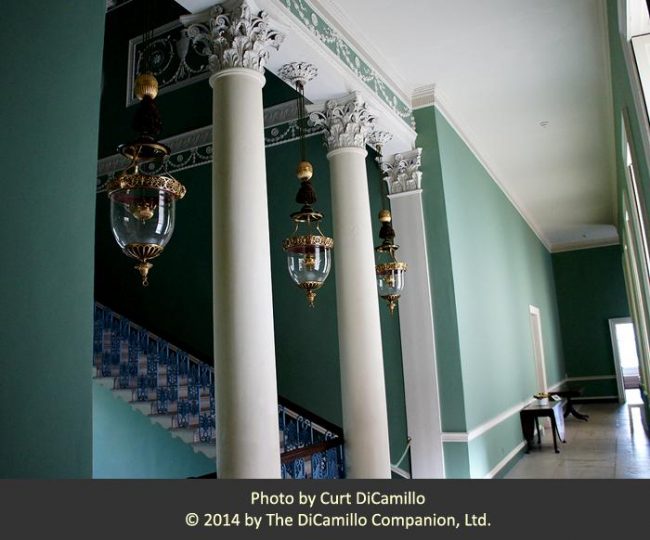
Adam's staircase screen

Adam-designed oil lamp on staircase screen

Long Gallery fireplace
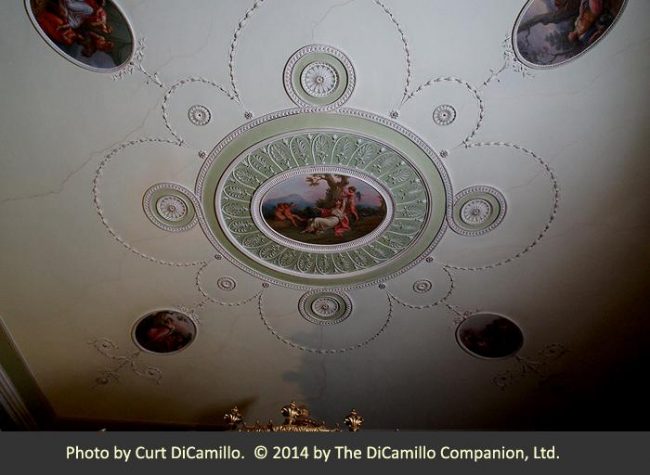
Ceiling of the State Bedroom
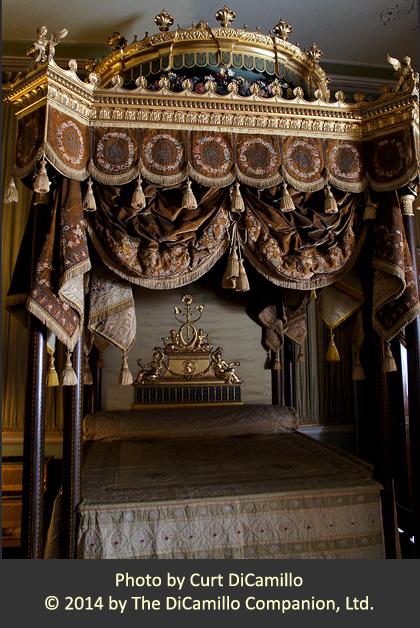
Adam's Temple of Venus State Bed

Adam's Temple of Venus State Bed
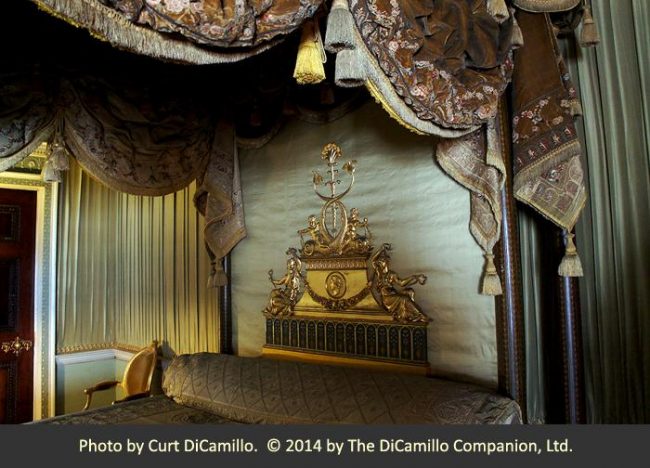
Adam's Temple of Venus State Bed

Adam's Temple of Venus State Bed

A hand-colored 1834 engraving of the ruins of the 1st century Temple of Venus at Baalbek (today Lebanon), the design source for the State Bed.

Ceiling of the Tapestry Room
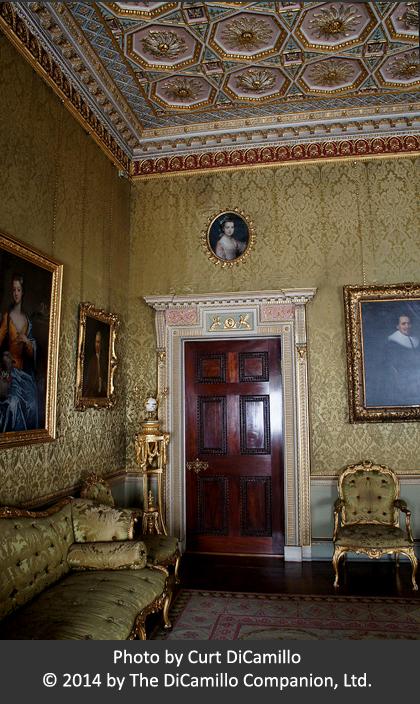
The drawing room
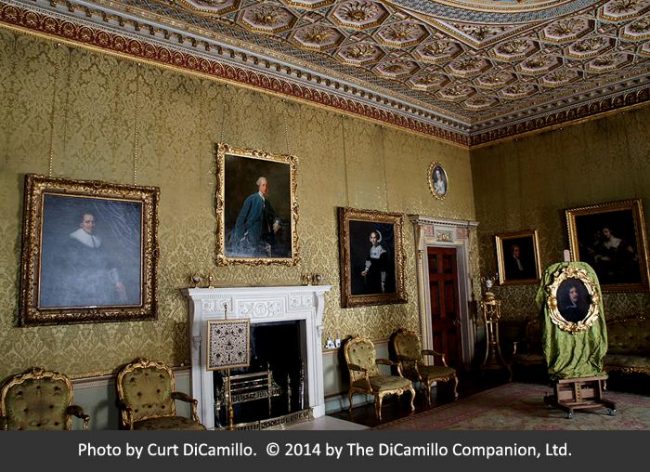
The drawing room
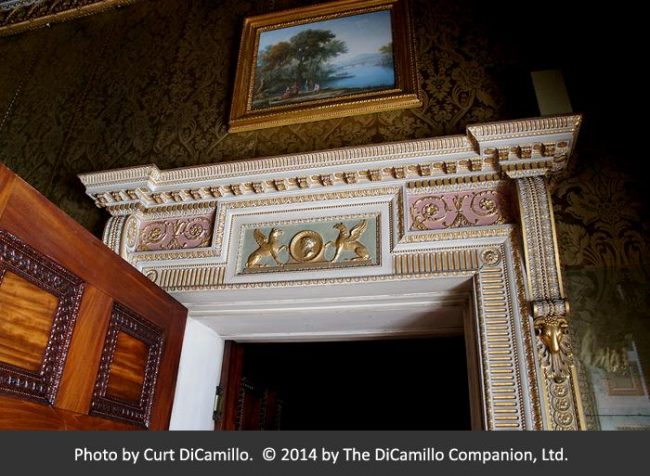
Drawing room door surround

Panel in the eating room

Plaster panel in the eating room

The Etruscan Room
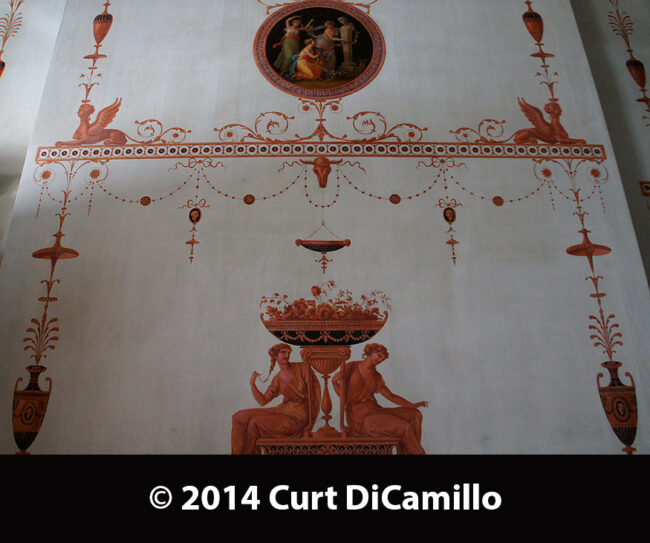
Etruscan Room wall

Wall and ceiling in the Etruscan Room

Etruscan Room ceiling

Chairback in the Etruscan Room

The orangery
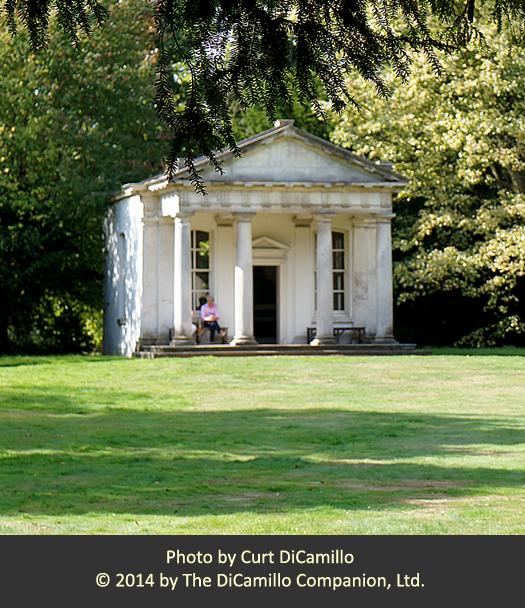
The Temple of Pan

An 1855 engraving of Child's Banking House, Fleet Street, London, from "Old and New London." Child's Bank was the inspiration for Tellson's Bank in Charles Dickens's "A Tale of Two Cities."

A 1943 Glyn, Mills Bank check. Glyn, Mills & Co. was the successor to Child & Co.
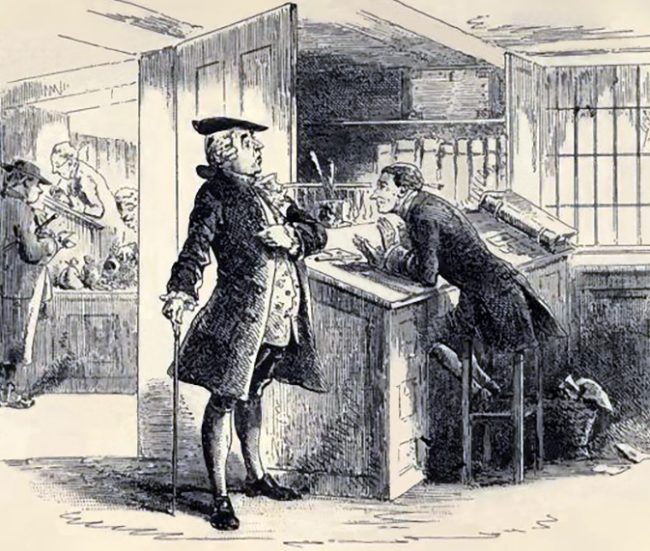
Illustration by Phiz from the 1859 edition of “A Tale of Two Cities” of Mr. Stryver visiting Mr. Lorry at Tellson's Bank, London.
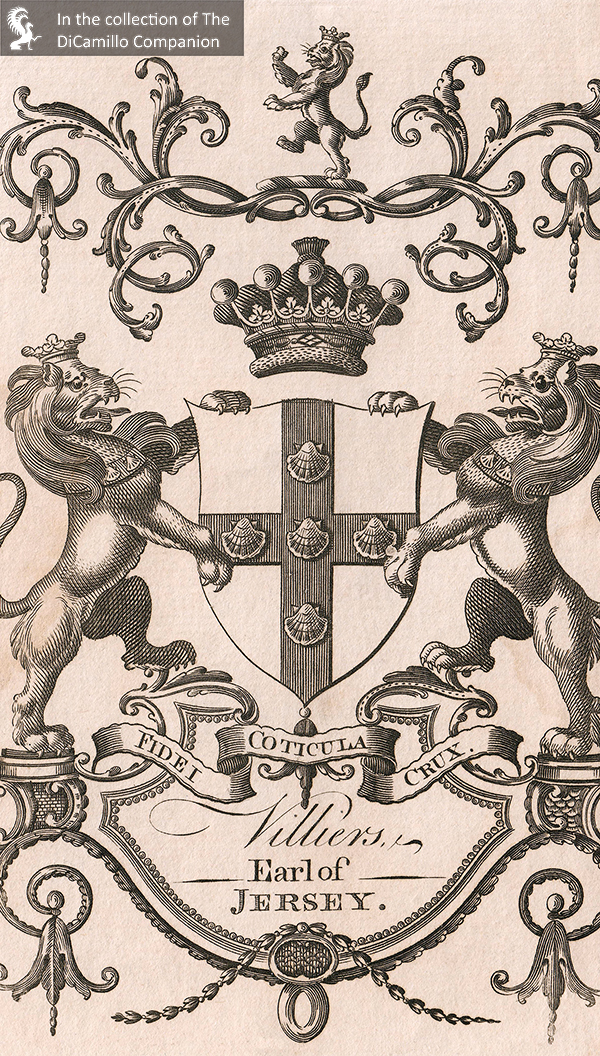
Engraving of the coat of arms of the 3rd Earl of Jersey from a 1766 issue of "The Universal Magazine"
Built / Designed For: Sir Thomas Gresham
House & Family History: Osterley Park began life as a mid-16th century manor house built for Sir Thomas Gresham, a famous banker and founder of the Royal Exchange. Sir Thomas purchased the manor of Osterley in 1562 and completed his stately Tudor brick house in 1576. So successful and rich was Sir Thomas that the queen herself, Elizabeth I, visited him at Osterley. Two hundred years later, with the great house crumbling, its defaulted mortgage came into the possession of Sir Francis Child, lord mayor of London, jeweler to King William III, and proprietor of the banking house of Child & Co. It was the Childs who, beginning in 1761, employed Robert Adam, over a period of 20 years, to remodel the house. Adam’s spectacular interiors at Osterley created a palace of Neoclassicism that is one of the most complete examples of the architect’s oeuvre. Amazingly, Osterley today contains all of Adam’s original decoration and furnishings. The library is famous for its panels painted by Antonio Zucchi, while the 130-foot-long gallery is famed for its Beauvais tapestries. The Tapestry Room contains the Gobelins tapestries woven especially for it in 1775. There are similar Gobelin tapestry sets, called the Tentures de Boucher, that were made for Croome Court, Worcestershire (today in the collection of the Metropolitan Museum of Art); Weston Park, Shropshire; Osterley Park, London; Newby Hall, Yorkshire; and Moor Park. Hertfordshire (today in the collection of Aske Hall). The State Bedroom contains one of Adam's most ebullient creations—the domed state bed, circa 1776, conceived as a Temple of Venus. The massive eight-poster bed was based on Robert Wood's engraving of the 1st century Temple of the Sun, published in his book "Ruins of Baalbek" (modern day Lebanon), published in 1757 (see engraving of the Temple of Baalbek in the "Images" section). The famous Etruscan Room contains one of the earliest designs in the fashion, which later became popular among Britain's aristocracy. The banking house of Child & Co. was founded in London the 1660s as goldsmiths; the firm was very successful and, over time, became one of the foremost banks in 18th and early 19th century Britain. Their bank in Fleet Street was extremely conservative in its activities (so conservative, in fact, that, unlike most Victorian banks, it refused to pay interest on money held on deposit by its customers) and is believed to have been the model for Tellson's Bank (Tellson & Co.) in Charles Dickens's "A Tale of Two Cities" (see "Images" section). The bank remained a going concern until the early 20th century, when the wave of consolidations in the British banking industry made Child & Co. less able to compete. Thus, in 1924, following the death of the 8th Earl of Jersey, Child & Co. was sold to Glyn, Mills & Co., an important banking house in the City of London; the sale was made primarily to meet heavy death duties due on the earl's estate (at his death in 1782, Richard Child left his fortune to his daughter's eldest daughter, Lady Sarah Sophia Fane, who married George Child-Villiers, 5th Earl of Jersey, in 1804, which is how the earls of Jersey came to own Child & Co.). Williams Deacon's Bank acquired Glyn's in 1939 (both were later taken over by the Royal Bank of Scotland) and was known as Williams & Glyn's Bank from 1970 until 1985. The beginning of World War II brought a period of change for the bank: in central London the risk of bombing was great; thus, in 1939 the Jersey family offered evacuation facilities for Child & Co. at Osterley. During the war huts were built in the park to accommodate the main banking departments; only the cashiers and one senior member of staff remained in Fleet Street. Regardless of who has owned it, Child & Co. has always been maintained as a separate business with its own identity, which it continues today at the mark of the marigold at its famous headquarters at No. 1 Fleet Street. You can see a mid-19th century engraving of the Child & Co. office on Fleet Street next to the Temple Bar in the "Images" section.
Garden & Outbuildings: The Osterley Estate is one of the few remaining superior landscape parks in the suburbs of London. The Adam family designed the entrance lodges, the bridge, and garden houses, all set in extensive park and farmland, complete with pleasure grounds. The fine 16th century stables survive largely intact and are still in use.
John Bernard (J.B.) Burke, published under the title of A Visitation of the Seats and Arms of the Noblemen and Gentlemen of Great Britain and Ireland, among other titles: 2.S. Vol. I, p. 211, 1854.
Country Life: LX, 782, 818 plan, 858, 907 [Pictures], 938 [Furniture], 972 [Furniture], 1926. LXXXV, 579, 1939. LXXXVI, 8 [Furniture], 1939. XCIX, 440, 1946. CXLVII, 1164 [Furniture], 1258 [Furniture], 1970.
Title: Osterley Park House - 1985
Author: Hardy, John; Tomlin, Maurice
Year Published: 1985
Reference: pgs. 17, 21, 25,
Publisher: London: Victoria and Albert Museum
ISBN: 0948107146
Book Type: Softback
Title: National Trust Magazine, The
Author: NA
Year Published: NA
Reference: Spring 2003, pg. 8
Publisher: Swindon: The National Trust
ISBN: NA
Book Type: Magazine
Title: Biographical Dictionary of British Architects, 1600-1840, A - SOFTBACK
Author: Colvin, Howard
Year Published: 1995
Publisher: New Haven: Yale University Press
ISBN: 0300072074
Book Type: Softback
House Listed: Grade I
Park Listed: Grade II*
Past Seat / Home of: Sir Thomas Gresham, 16th century. Sir William Waller, 17th century. Nicholas Barbon, 17th century. Sir Robert Child, 18th century; George Francis Child-Villiers, 9th Earl of Jersey, 19th century.
Current Ownership Type: The National Trust
Primary Current Ownership Use: Visitor Attraction
House Open to Public: Yes
Phone: 02082-325-050
Fax: 02082-325-080
Email: [email protected]
Website: https://www.nationaltrust.org.uk
Historic Houses Member: No